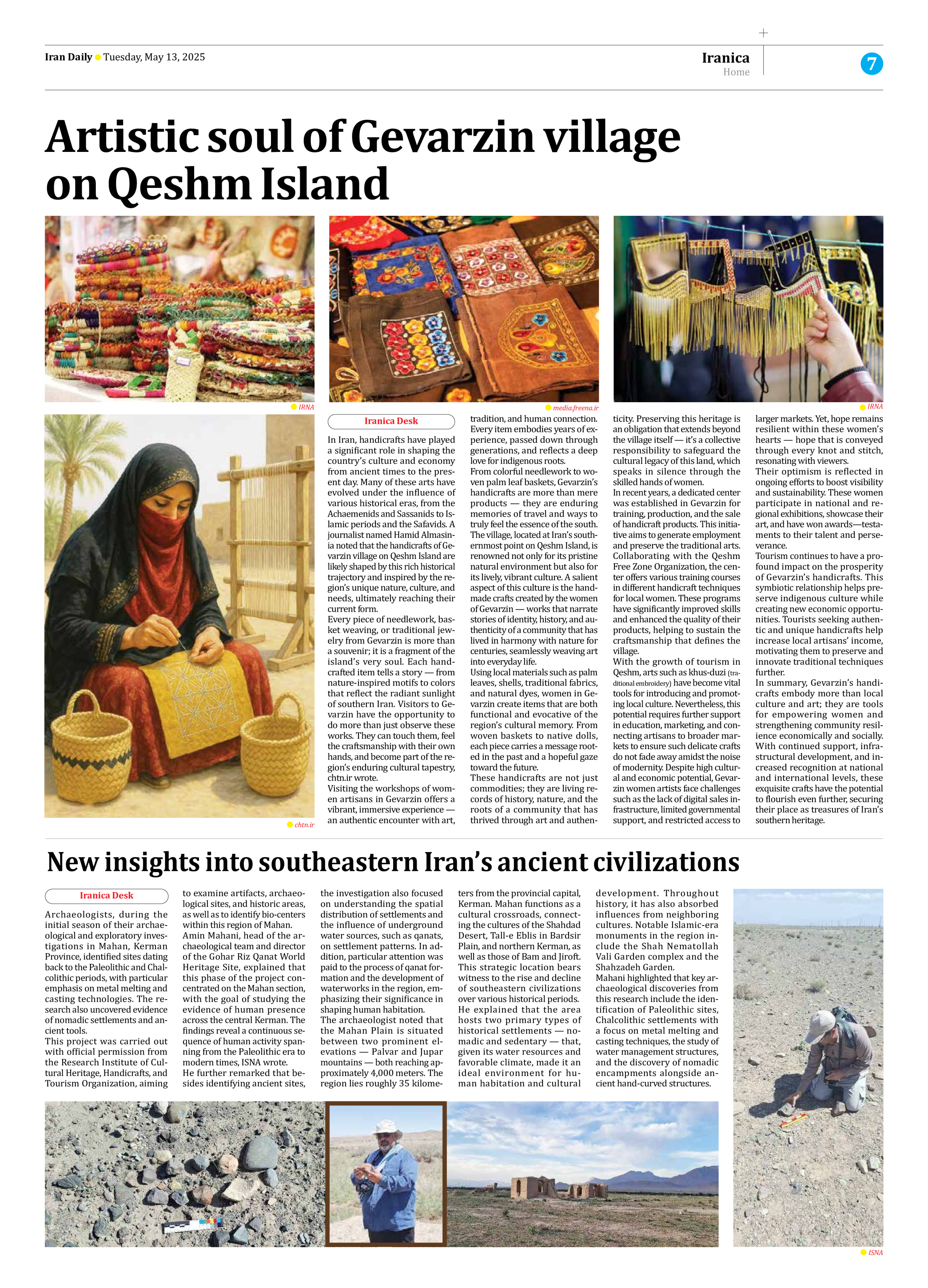
New insights into southeastern Iran’s ancient civilizations
Archaeologists, during the initial season of their archaeological and exploratory investigations in Mahan, Kerman Province, identified sites dating back to the Paleolithic and Chalcolithic periods, with particular emphasis on metal melting and casting technologies. The research also uncovered evidence of nomadic settlements and ancient tools.
This project was carried out with official permission from the Research Institute of Cultural Heritage, Handicrafts, and Tourism Organization, aiming to examine artifacts, archaeological sites, and historic areas, as well as to identify bio-centers within this region of Mahan.
Amin Mahani, head of the archaeological team and director of the Gohar Riz Qanat World Heritage Site, explained that this phase of the project concentrated on the Mahan section, with the goal of studying the evidence of human presence across the central Kerman. The findings reveal a continuous sequence of human activity spanning from the Paleolithic era to modern times, ISNA wrote.
He further remarked that besides identifying ancient sites, the investigation also focused on understanding the spatial distribution of settlements and the influence of underground water sources, such as qanats, on settlement patterns. In addition, particular attention was paid to the process of qanat formation and the development of waterworks in the region, emphasizing their significance in shaping human habitation.
The archaeologist noted that the Mahan Plain is situated between two prominent elevations — Palvar and Jupar mountains — both reaching approximately 4,000 meters. The region lies roughly 35 kilometers from the provincial capital, Kerman. Mahan functions as a cultural crossroads, connecting the cultures of the Shahdad Desert, Tall-e Eblis in Bardsir Plain, and northern Kerman, as well as those of Bam and Jiroft. This strategic location bears witness to the rise and decline of southeastern civilizations over various historical periods.
He explained that the area hosts two primary types of historical settlements — nomadic and sedentary — that, given its water resources and favorable climate, made it an ideal environment for human habitation and cultural development. Throughout history, it has also absorbed influences from neighboring cultures. Notable Islamic-era monuments in the region include the Shah Nematollah Vali Garden complex and the Shahzadeh Garden.
Mahani highlighted that key archaeological discoveries from this research include the identification of Paleolithic sites, Chalcolithic settlements with a focus on metal melting and casting techniques, the study of water management structures, and the discovery of nomadic encampments alongside ancient hand-curved structures.







